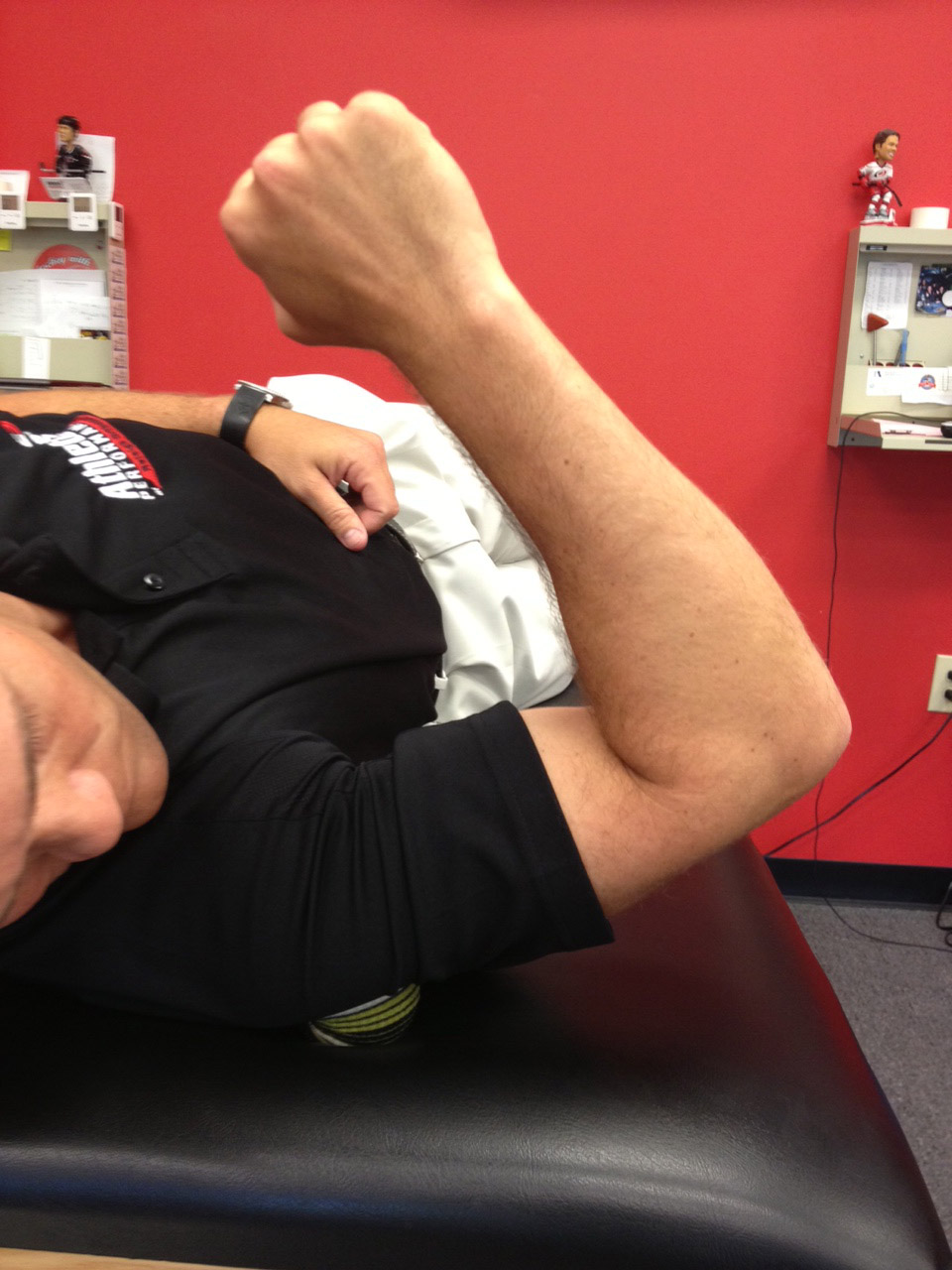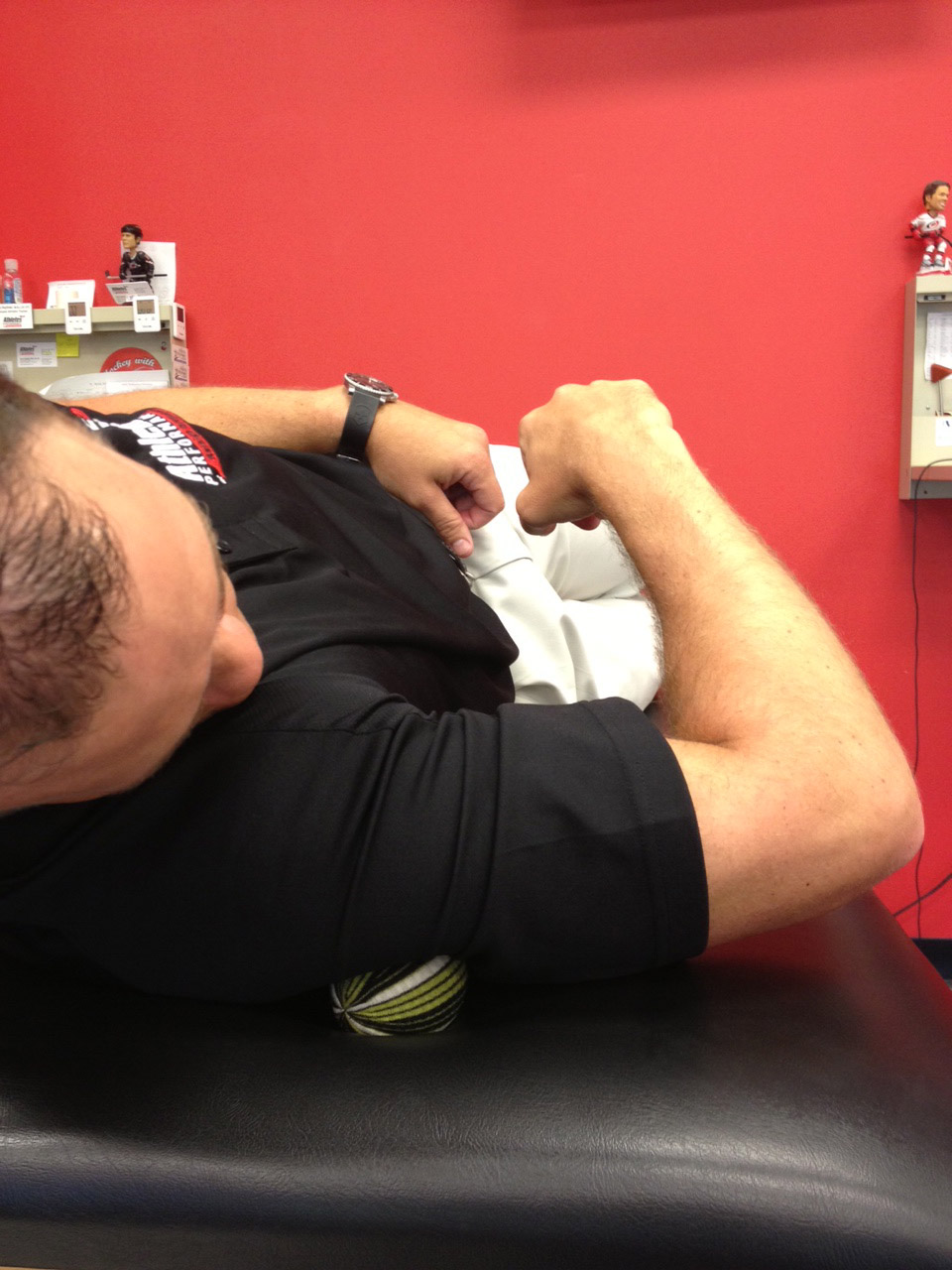
Improving posterior shoulder mobility will help reduce shoulder impingement, improve posture and maximize shoulder health. Tightness often develops in overhead athletes or in response to faulty posture and injury. The following technique can be easily performed with a lacrosse, tennis or trigger point ball at home to release tightness in the soft tissue.
Execution:
Begin in side lying position with the trigger point ball located along the posterior shoulder. Next, slowly internally and externally rotate the shoulder for 5-10 repetitions. Move the ball to hit the posterior joint line as well as posterior rotator cuff musculature.
If the pressure proves too much or too painful, an alternative method involves standing and placing the ball between the shoulder and a wall or solid object. In this maneuver, the arm is still moved through horizontal internal and external rotation. Pressure can be gradually increased by leaning into the ball with more body weight.
Execution:
Begin in side lying position with the trigger point ball located along the posterior shoulder. Next, slowly internally and externally rotate the shoulder for 5-10 repetitions. Move the ball to hit the posterior joint line as well as posterior rotator cuff musculature.
If the pressure proves too much or too painful, an alternative method involves standing and placing the ball between the shoulder and a wall or solid object. In this maneuver, the arm is still moved through horizontal internal and external rotation. Pressure can be gradually increased by leaning into the ball with more body weight.
 |  |
Application:
This exercise is a simple way to reduce posterior shoulder tightness and address trigger points that may be present specifically in the infraspinatus. Tightness and trigger points in the infrapsinatus are common and create lots of dysfunction in the shoulder. Problems may include a rounded shoulder, chest tightness, rotated scapula causing fatigue in periscapular muscles, trap tightness and even anterior compression of the humerus.
It is essential that any trigger points be resolved prior to stretching to make a lasting impact on the soft tissue mobility. Performing trigger point work for at least 2-3 minutes prior to posterior shoulder stretching will markedly improve shoulder health and posture, while reducing injury risk.
Brian Schiff, PT, OCS, CSCS, is a licensed physical therapist, respected author and fitness professional. Currently, he serves as the supervisor at the Athletic Performance Center in Raleigh, NC. Brian presents nationally at several professional conferences and seminars on injury prevention, rehab and sport-specific training. For more cutting edge training information, subscribe to his monthly Training & Sports Medicine Update at www.BrianSchiff.com.















